Development teams face constant pressure to deliver high-quality software faster, yet outdated processes and disconnected tools often stand in the way. When engineering, product, and business teams work in isolation, collaboration breaks down, backlogs grow, and adapting to changing priorities becomes increasingly difficult. The result is slower progress and reduced confidence across the organization.
The Agile development process addresses these challenges by emphasizing iterative progress, cross-functional collaboration, and continuous improvement. It enables teams to stay aligned, deliver value quickly, and adjust plans as conditions evolve.
This guide explains how the Agile development process works in 2025, outlining its core principles, key stages, and leading methodologies. Join us and we’ll also explore how modern teams apply Agile best practices to improve visibility, streamline delivery, and build products with greater impact.
Key takeaways
- Agile development delivers value faster: working software is released every one to four weeks instead of months, enabling teams to adapt quickly based on real user feedback.
- Four core Agile values guide success: focusing on people over processes, working software over documentation, customer collaboration over contracts, and change over fixed plans.
- monday dev enhances Agile implementation: customizable workflows and real-time visibility support any methodology, including Scrum, Kanban, or hybrid frameworks.
- High-performing Agile teams thrive on collaboration: success depends on cross-functional teamwork, a culture of continuous improvement, and defined roles such as Product Owner, Scrum Master, and Development Team members.
- Common Agile challenges can be overcome: clear governance, prioritized backlogs, and consistent communication help teams manage evolving requirements and scale effectively.
What is Agile development?
Agile development is an iterative approach to building software that delivers working features in short cycles called sprints. Despite any buzz to the contrary, a 2025 Forrester blog post affirms its critical relevance to their operations, with 95% of professionals agreeing. This means teams release usable software every one to four weeks instead of waiting months or years for a complete product.
Agile teams collaborate closely with customers throughout the development process, releasing usable features frequently and incorporating feedback along the way. This continuous cycle of delivery and improvement ensures each iteration adds meaningful value, helping teams refine priorities, improve quality, and stay aligned with evolving business goals.
Understanding Agile development methodology
Agile development methodology is a collection of frameworks and practices that share common principles while offering different ways to organize work. Popular frameworks include Scrum, Kanban, and Extreme Programming (XP).
Each framework provides specific roles, ceremonies, and practices to guide teams. What they all share is a focus on delivering value quickly, adapting to change, and maintaining close collaboration with customers.
Why Agile development drives modern software success
Agile enables teams to respond quickly when market conditions change or new opportunities emerge. You deliver working software early and often, which means customers start getting value sooner and you can validate ideas before investing too much time.
This approach also creates happier, more productive teams. When developers see their work in customers’ hands quickly, it builds momentum and motivation that traditional approaches can’t match.
How does the Agile development process work?
The Agile development process follows a structured, repeatable cycle designed to turn ideas into working software through constant collaboration and feedback. It begins with planning and continues through development, testing, review, and reflection: each stage building on the last to deliver continuous improvement.
Understanding this cycle and its key components, such as backlogs, sprints, and user stories, is essential to implementing Agile effectively. The following sections break down how these elements work together to create a flexible, transparent workflow that keeps teams aligned and focused on delivering value.
The Agile development cycle
The Agile cycle begins with planning, where teams select work from a prioritized list called a backlog. During development, teams build features using collaborative practices that keep everyone aligned.
Testing happens continuously throughout development. Teams write automated tests and conduct quality checks as they go, rather than waiting until the end. Here’s what a typical cycle includes:
- Sprint planning: select and commit to specific features for the upcoming sprint.
- Daily stand-ups: brief meetings to share progress and identify blockers.
- Development work: build features collaboratively with continuous testing.
- Sprint review: show completed work to stakeholders for feedback.
- Retrospective: reflect on what worked well and what to improve.
Key components of Agile workflow
An effective Agile workflow relies on a few core elements that keep teams aligned, flexible, and focused on delivering value. Each component works together to support clear planning, efficient execution, and continuous improvement.
- Product backlog: the single source of truth for everything that could be built, including new features, enhancements, and technical improvements. It evolves as teams gather feedback and adjust priorities based on changing business and customer needs.
- Sprint backlog: a focused subset of the product backlog containing the items committed to for the next sprint. It provides clarity on short-term goals and helps teams stay accountable to achievable outcomes.
- User stories: concise, customer-focused descriptions of functionality that guide development work. They follow the simple format: “As a [user type], I want [functionality] so that [benefit].”
Platforms like monday dev support every stage of this process by centralizing Agile project management within one connected workspace. Teams can manage product and sprint backlogs, organize user stories, and track progress in real time through customizable boards and automations.
The 4 core values of Agile software development
The Agile Manifesto established four values that guide how teams approach their work. These aren’t rules to follow blindly — they’re principles that help you make decisions when facing trade-offs.
Understanding these Agile values helps you navigate the daily choices that come up in Agile software development: they remind you what matters most when deadlines loom or requirements change.
1. People over processes
Great software comes from great teams, not perfect processes. While structure helps, the creativity and collaboration of your team members drive real success.
Focus on building strong relationships and open communication. When team members trust each other and feel empowered to contribute, they solve problems more effectively than any process could dictate.
2. Working software over documentation
Documentation has its place, but working software provides immediate value. Customers can’t use a requirements document — they need actual features that solve their problems.
This doesn’t mean abandoning documentation entirely. Create just enough to support development and maintenance, but always prioritize delivering software that customers can use and provide feedback on.
3. Customer collaboration over contracts
Traditional projects treat requirements as fixed contracts. Agile recognizes that customers learn what they really need by using the software and seeing what’s possible.
Regular collaboration helps you build the right features. Instead of guessing what customers want at the project’s start, you work with them throughout development to refine and improve the product.
4. Embracing change over fixed plans
Markets shift. Competitors launch new features. Customer needs evolve. Agile treats these changes as opportunities rather than disruptions to avoid.
Teams that embrace change can pivot quickly to capture new opportunities. monday dev supports this flexibility through customizable workflows that adapt as your team’s needs change.
12 principles behind Agile development success
In addition to its four core values, the Agile Manifesto defines 12 guiding Agile principles that translate those values into practical action. These principles cover key areas such as collaboration, technical excellence, and customer satisfaction.
Together, they create an environment where teams can deliver high-quality software sustainably. The principles emphasize practices that teams can maintain over long periods without burning out:
- Customer satisfaction: deliver valuable software early and continuously.
- Welcome change: view changing requirements as opportunities for improvement.
- Frequent delivery: release working software every few weeks to maintain momentum.
- Daily collaboration: ensure business and development teams work closely throughout the project.
- Motivated individuals: trust skilled teams and provide the support they need to succeed.
- Face-to-face conversation: prioritize direct communication as the most effective way to share information.
- Working software: use functioning software as the primary measure of progress.
- Sustainable pace: maintain a steady rhythm the team can sustain indefinitely.
- Technical excellence: apply strong design and engineering practices to enhance agility.
- Simplicity: focus on essential features and remove unnecessary work.
- Self-organizing teams: empower teams to make decisions and develop the best solutions.
- Regular reflection: review outcomes frequently to identify improvements and adapt continuously.
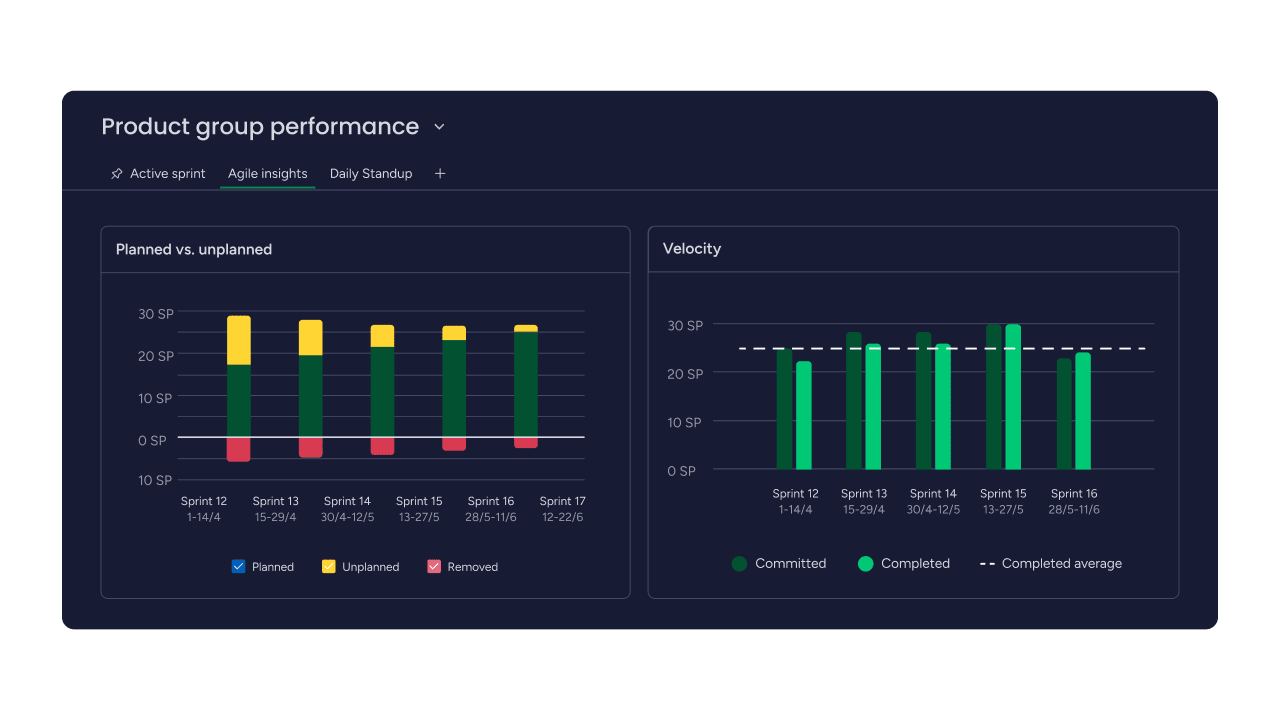
6 essential steps in the Agile development process
Implementing Agile requires a structured approach that balances flexibility with discipline. The steps below provide a framework for delivering value consistently while adapting to change, forming a core part of the Agile sdlc.
Keep in mind that each step builds on the previous ones. It’s also worth noting that if you have have to customize these steps to fit your team’s context always ensure that you maintain the core principles that make Agile effective.
Step 1: define product vision and strategy
Every Agile project needs a clear vision that explains what you’re building and why it matters. This vision guides all future decisions about features and priorities.
The product owner typically leads this work, collaborating with stakeholders to define success criteria. A strong vision keeps teams focused on delivering real value rather than getting distracted by interesting but non-essential features, which is essential to Agile product management.
Step 2: create and prioritize product backlog
Turn the product vision into a clear list of actionable work items that deliver real value to users. Each item should be specific, measurable, and easy for teams to estimate and complete.
- Write user stories: describe features from the customer’s perspective with clear acceptance criteria.
- Set priorities: rank items based on business impact and feedback.
- Refine regularly: adjust priorities as customer needs evolve.
With monday dev, teams can manage this process in one place, turning backlog items into a visual, trackable workflow that keeps Agile planning focused and transparent.
Step 3: plan and execute sprints
Sprint planning meetings let teams select backlog items for the upcoming sprint. Teams estimate effort and commit to delivering specific functionality.
During execution, daily standups keep everyone aligned, forming one of the essential Agile ceremonies that help teams coordinate work and address obstacles before they become major problems.
Step 4: test and integrate continuously
Write automated tests and conduct code reviews throughout development. Deploy changes frequently to catch issues early when they’re easier to fix.
This approach reduces integration problems and maintains quality. Everyone shares responsibility for quality rather than relegating it to a final testing phase, which aligns with Agile testing best practices.
Step 5: review and gather feedback
Sprint reviews demonstrate completed work to stakeholders. Focus on working software rather than presentations, ensuring feedback is based on actual user experience.
Use this feedback to validate assumptions and adjust priorities. This continuous loop keeps development aligned with customer needs and business objectives.
Step 6: deploy and iterate
Deploy software frequently to learn from real-world usage. Each deployment provides data about how users interact with features and what provides the most value.
Use these insights to refine existing features and prioritize new work. This iterative approach ensures you’re building based on evidence rather than assumptions.
Top 5 Agile development methodologies
Different Agile methodologies offer various approaches to implementing Agile principles, among a wide range of software development methodologies teams can adopt. Understanding each of the following is really important as it can help you choose the approach that fits your team’s situation and culture.
While all share common values, they differ in structure, practices, and scalability. Some work well for small teams, others for large organizations with complex coordination needs.
Scrum framework
Scrum provides structure through defined roles, events, and artifacts. Three key roles drive the process: Product Owner (defines what to build), Scrum Master (facilitates the process), and Development Team (builds the product).
Scrum events create a rhythm of planning, execution, and improvement, assisted by scrum tools that support collaboration. Platforms like monday dev support Scrum practices through customizable sprint boards and reporting features that help teams track progress.
Kanban method
The Kanban methodology visualizes workflow and limits work-in-progress to optimize value flow. Teams use boards to represent work stages, moving items from left to right as they progress.
This method emphasizes continuous delivery rather than fixed sprints. It’s particularly effective for teams handling ongoing maintenance or unpredictable demand patterns.
Extreme programming (XP)
XP emphasizes technical excellence through practices like pair programming and test-driven development. Teams write tests before code, ensuring thorough validation and maintainable codebases.
The methodology promotes frequent releases and collective code ownership. XP works particularly well for teams building complex systems requiring long-term maintenance.
Lean software development
Lean applies manufacturing principles to software, focusing on eliminating waste and delivering customer value efficiently. Teams make decisions based on data rather than assumptions.
Key principles include eliminating waste, amplifying learning, and empowering teams. These help teams focus on activities that directly contribute to customer value.
Scaled Agile Framework (SAFe)
SAFe helps large organizations implement Agile across multiple teams. It provides guidance for coordinating work while maintaining architectural coherence at scale.
The framework defines roles and events at multiple organizational levels. While more complex than other approaches, SAFe provides structure for enterprise-scale Agile adoption.
Key benefits of Agile development practices
The Agile development process delivers tangible results across delivery speed, product quality, and customer satisfaction. Its value comes not just from the framework itself, but from how teams apply its principles: focusing on outcomes, collaboration, and adaptability rather than rigid routines.
When practiced effectively, Agile creates a continuous cycle of improvement where every sprint enhances performance, strengthens teamwork, and drives measurable business impact. The following benefits highlight how Agile practices translate into faster delivery, higher quality, and greater customer value.
Accelerated delivery times
Agile’s iterative approach gets working software to customers faster. By focusing on the most valuable features first, you deliver business value within weeks.
This acceleration comes from eliminating waste and reducing handoffs. Teams spend time on activities that directly contribute to customer value.
Superior product quality
Agile practices embed quality into every stage of development rather than treating it as a final step. Continuous testing and regular feedback help teams identify and resolve issues early, creating more stable and reliable software.
Key quality drivers include:
- Test-driven development: ensures functionality is validated from the start.
- Frequent reviews and iterations: allow quick adjustments based on feedback.
- Built-in quality metrics: track reliability and performance across sprints.
This proactive approach reduces QA costs, minimizes defects, and results in higher customer confidence.
Enhanced team performance
Agile empowers teams to collaborate, experiment, and continuously improve. A culture of shared ownership encourages problem-solving and fosters higher engagement and job satisfaction.
Strong team performance comes from:
- Cross-functional collaboration: bringing diverse skills together to solve challenges quickly.
- Transparency and accountability: helping everyone understand goals and progress.
- Continuous learning: enabling teams to adapt and refine their approach over time.
With monday dev, teams gain real-time visibility into tasks, progress, and dependencies, creating a clear, connected view of Agile project management that supports stronger collaboration and faster delivery.
Maximum flexibility for change
Agile’s emphasis on responding to change helps teams capitalize on new opportunities. Rather than treating change as disruption, teams view it as competitive advantage.
This flexibility comes from maintaining loose coupling and lightweight documentation. Strong customer relationships provide guidance when priorities shift.
Higher customer satisfaction rates
Frequent delivery and ongoing involvement ensure products align with customer expectations, with a McKinsey report on agility showing that companies see a 30 percent improvement in customer satisfaction after scaling Agile practices.
Customers see progress regularly and influence development priorities.
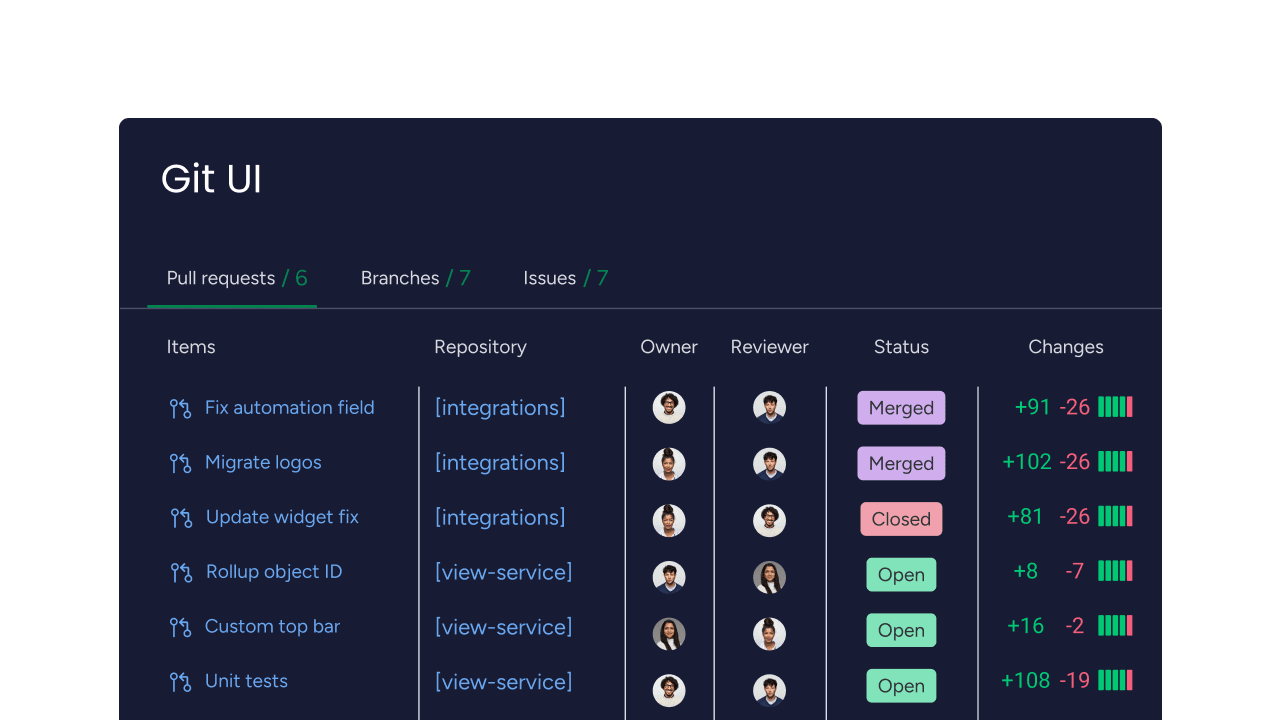
Agile vs Waterfall: choosing the right development approach
Selecting the right development methodology depends on project complexity, team structure, and how quickly requirements are expected to evolve. Both Agile and Waterfall offer advantages, but their effectiveness depends on how closely they align with the project’s goals and environment.
Waterfall follows a structured, sequential process where each phase must be completed before the next begins. This approach suits projects with fixed requirements, clear documentation, and limited need for ongoing feedback.
Agile, by contrast, focuses on flexibility and iteration. Work is delivered in short cycles, allowing teams to adapt quickly to feedback, test new ideas, and respond to changing priorities.
Key differences to consider include:
- Requirements handling: Agile evolves with customer input, while Waterfall finalizes requirements before development begins.
- Delivery approach: Agile delivers incrementally throughout the project, while Waterfall releases once at the end.
- Team structure: Agile relies on cross-functional collaboration, while Waterfall separates teams by discipline or phase.
- Change management: Agile adapts to change as part of the process, while Waterfall manages change through formal approvals.
- Customer involvement: Agile involves customers continuously, while Waterfall typically engages them at the start and final delivery.
In some cases, a hybrid model may offer the best of both worlds — combining Agile’s adaptability with Waterfall’s structure to balance speed, predictability, and control.
How to build high-performance Agile development teams
Creating successful Agile teams requires more than adopting practices — it requires building the right dynamics and culture. High-performance teams share characteristics that enable exceptional results.
These characteristics develop over time as teams learn to work together effectively. Focus on creating an environment where team members feel empowered to contribute their best work.
Essential Agile team roles
The Product Owner defines what to build by managing the backlog and prioritizing based on business value. They serve as the primary interface between the team and stakeholders.
The Scrum Master facilitates the process by removing obstacles and coaching team members. Unlike traditional project managers, they enable rather than direct the team. The Development Team includes all skills needed to deliver working software. This cross-functional group collaborates closely to deliver high-quality results.
Creating collaborative team dynamics
High-performing Agile teams thrive on trust, transparency, and open communication. When team members feel supported and connected, collaboration becomes natural and problem-solving improves.
Strong collaboration comes from:
- Open communication: encouraging honest discussions, questions, and idea sharing.
- Shared accountability: aligning around goals and taking collective ownership of outcomes.
- Consistent connection: using both formal rituals like daily standups and informal check-ins to maintain momentum.
With monday dev, teams can collaborate in real time through shared boards, progress updates, and visible timelines that keep everyone aligned: whether working in the same office or across time zones. This clarity builds confidence and strengthens the relationships that drive high performance.
Fostering continuous improvement culture
High-performance teams regularly reflect and adjust to improve. Sprint retrospectives provide structured opportunities to identify improvements.
This culture extends beyond formal retrospectives to ongoing experimentation. Teams that embrace learning maintain high performance over time. Psychological safety is essential — team members must feel comfortable taking risks and learning from failures. Leaders create this environment by modelling vulnerability and focusing on outcomes (a critical practice as employees who understand how success is measured are twice as likely to feel motivated).
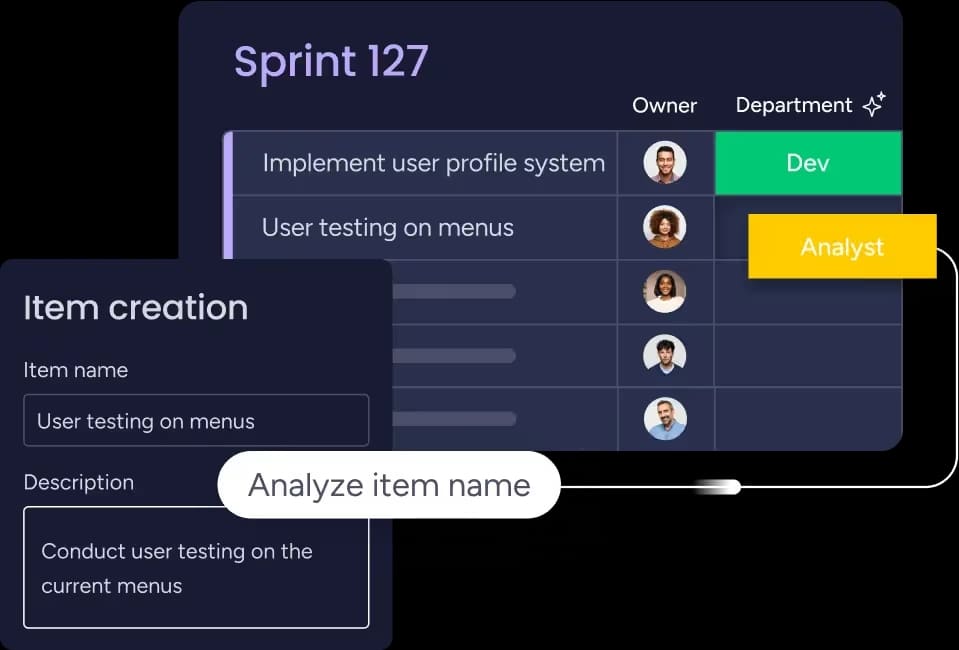
4 common Agile development challenges and how to solve them
Even well-planned Agile implementations encounter obstacles. Understanding common challenges helps teams navigate the transition more successfully.
These challenges often stem from organizational culture or attempting Agile without addressing underlying issues. Recognize them early and take proactive steps.
Challenge 1: managing evolving requirements
While flexibility is valuable, constantly shifting priorities can prevent teams from completing work effectively. Teams need some stability to maintain focus.
Establish clear criteria for accepting new requirements. Maintain a well-prioritized backlog that reflects current business priorities. Product owners must manage stakeholder expectations. monday dev helps manage evolving requirements through customizable workflows that adapt to changing priorities while maintaining visibility into scope impact.
Challenge 2: scaling Agile across organizations
Extending Agile beyond individual teams requires coordination without sacrificing autonomy. This becomes more complex as organizations grow.
Establish clear governance and communication protocols. Frameworks like SAFe provide structured approaches, but adapt them to your specific context.
Challenge 3: maintaining consistent team alignment
Distributed work and unclear communication can quickly cause misalignment. Teams need a shared understanding of goals, priorities, and how work gets done to stay connected and productive.
Ways to strengthen alignment include:
- Set clear goals and agreements: establish team charters or working norms early in the process.
- Communicate regularly: use Agile ceremonies such as daily standups, sprint reviews, and retrospectives to maintain connection.
- Make work visible: use shared dashboards, boards, or progress updates so everyone can see what is happening and why.
Consistent communication and transparency ensure that even distributed teams stay aligned on outcomes and progress.
Challenge 4: measuring real Agile impact
Measuring Agile success goes beyond tracking activity. True impact comes from assessing the outcomes that Agile practices deliver — improved quality, faster delivery, and stronger engagement.
To measure Agile effectiveness:
- Focus on outcomes: track customer satisfaction, product quality, and time to market.
- Assess adaptability: evaluate how quickly teams respond to change or resolve blockers.
- Measure engagement: consider collaboration levels and team sentiment as indicators of long-term success.
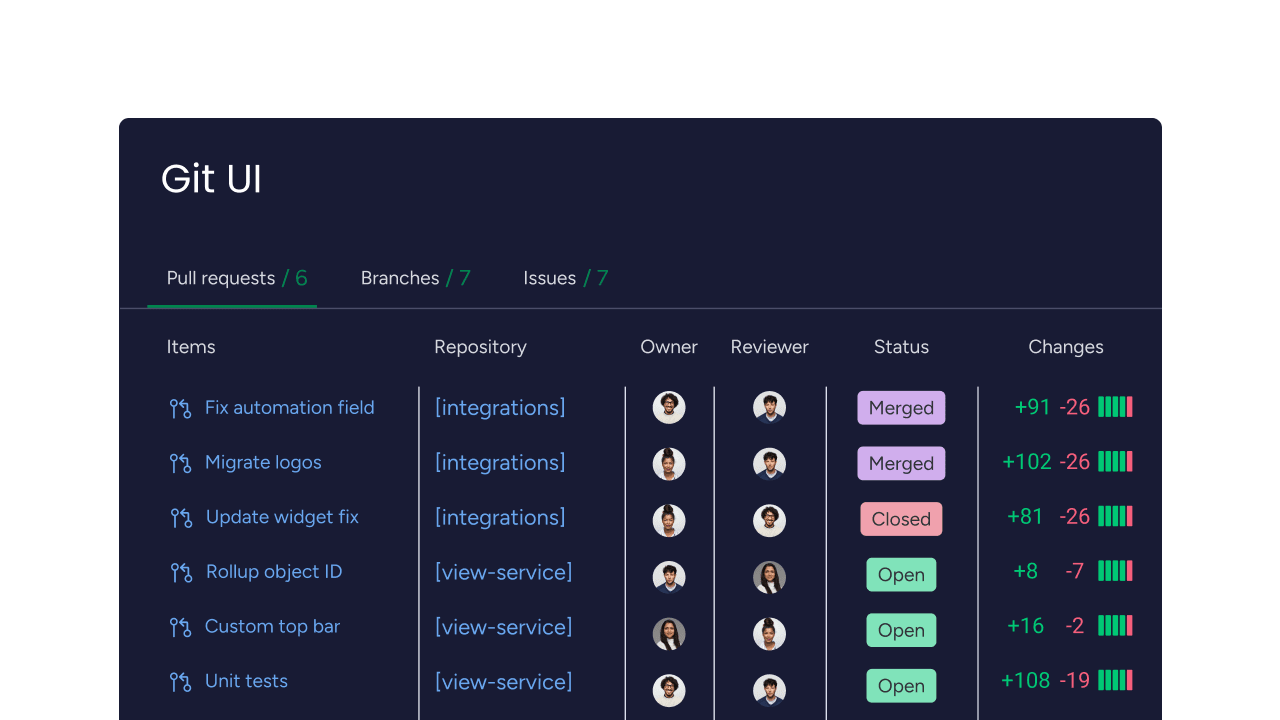
How AI enhances Agile development processes
AI transforms Agile development by automating routine work and providing predictive insights, which may be why 86% of IT professionals now use AI in their roles. Teams make more informed decisions throughout the development process.
AI augments rather than replaces human judgment. Teams focus on creative problem-solving while AI handles data processing and pattern recognition.
AI-driven sprint optimization
AI analyzes historical data to help teams plan more effectively. Machine learning recognizes patterns and suggests adjustments to sprint planning.
These insights help teams set realistic commitments and allocate work effectively. AI can also suggest optimal task sequencing based on dependencies.
Automated code quality assurance
AI-powered platforms automatically review code for quality issues and vulnerabilities. This provides immediate feedback without waiting for manual reviews.
Automated testing generates test cases and monitors application performance. This comprehensive approach supports Agile’s emphasis on frequent delivery.
Predictive project intelligence
AI predicts delivery timelines and identifies risks based on project patterns. This helps teams and stakeholders make informed decisions about scope and priorities.
monday dev incorporates AI capabilities that categorize work items and generate insights about project health. These features enable teams to work more efficiently while maintaining human collaboration.
Accelerate your Agile development with monday dev
Delivering on Agile principles requires a platform that connects people, processes, and progress in one place. monday dev provides that foundation, helping teams plan sprints, manage backlogs, and track delivery in a transparent, flexible environment built for continuous improvement.
The platform adapts to any Agile framework, whether Scrum, Kanban, or a hybrid approach, allowing teams to shape workflows that match their processes. Key capabilities include:
- Customizable sprint planning boards: define priorities, assign tasks, and visualize dependencies in real time.
- Automated workflows: reduce manual updates and keep work moving smoothly across development cycles.
- Advanced reporting tools: monitor burndown charts, agile velocity, and capacity to make data-driven decisions.
- Native CI/CD and Git integrations: connect GitHub, GitLab, and deployment pipelines directly to project boards for full visibility.
By uniting development, product, and business teams in one connected workspace, monday dev transforms Agile project management into a streamlined, outcome-driven process. Teams gain the clarity to focus on what matters most: delivering high-quality software that meets evolving customer needs.
Accelerate your Agile journey and empower your team to deliver with confidence — try monday dev today.
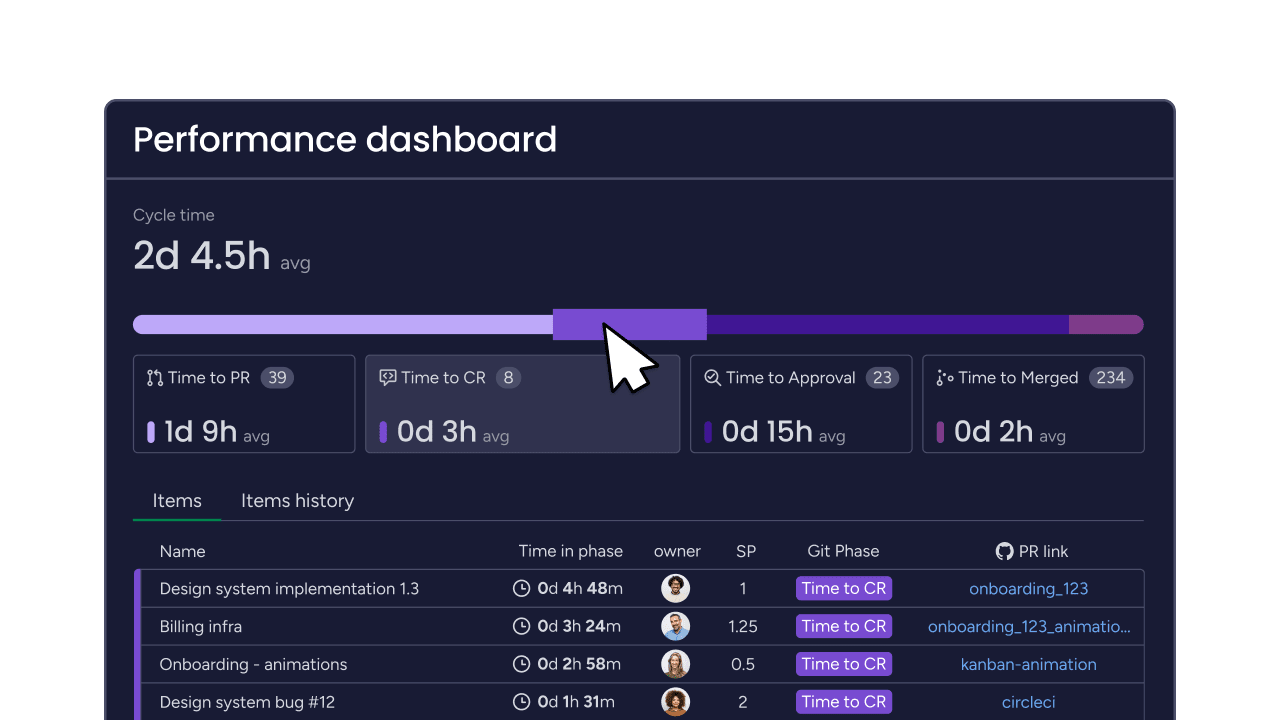
Frequently asked questions
What are Agile development processes?
Agile development processes are the specific activities and ceremonies teams use to implement Agile principles in daily work. These include sprint planning, daily stand-ups, sprint reviews, and retrospectives that create a rhythm of planning, execution, and improvement.
What are the 5 stages of the Agile model development process?
The five stages of Agile development are ideation (defining product vision), development (building features in sprints), testing (continuous quality assurance), deployment (releasing working software), and operations (maintaining and improving based on feedback).
What are the 7 stages of the software development process?
The seven stages typically include planning, analysis, design, implementation, testing, deployment, and maintenance. In Agile, these stages happen iteratively within each sprint rather than sequentially across the entire project.
What is an Agile step by step process?
An Agile step-by-step process involves defining project goals, breaking work into manageable pieces, creating a prioritized backlog, planning sprints, executing development work, and continuously monitoring progress while adapting to feedback.
Is Agile development methodology suitable for all types of software projects?
Agile development methodology works well for most software projects, especially those with evolving requirements or innovative features. However, projects with fixed regulatory requirements or extremely stable specifications might benefit from more traditional approaches.
How long does it typically take for teams to become proficient in Agile development?
Teams typically take three to six months to become comfortable with basic Agile practices. Achieving high performance usually requires 12–18 months, depending on previous experience, organizational support, and commitment to continuous improvement.
 Get started
Get started 


